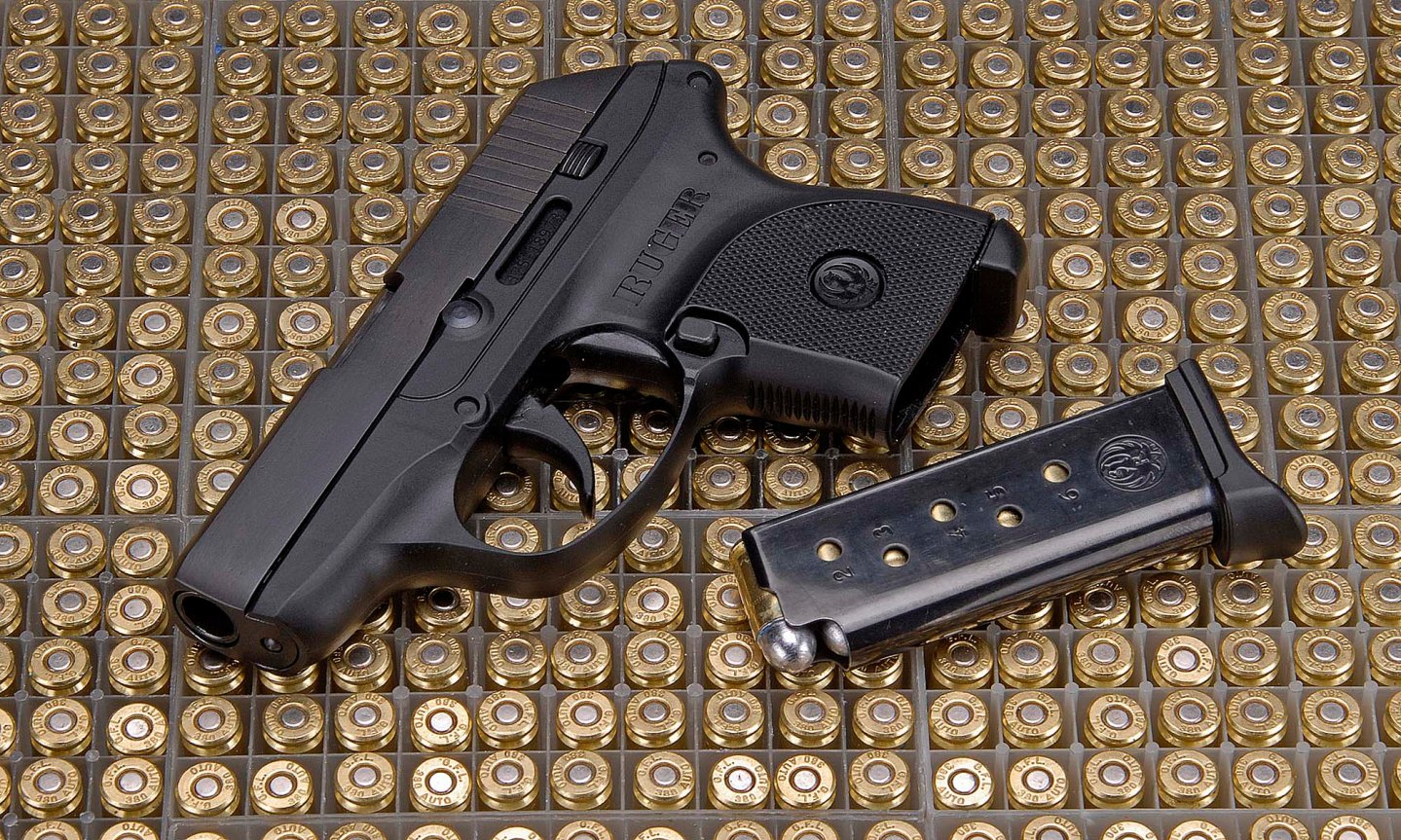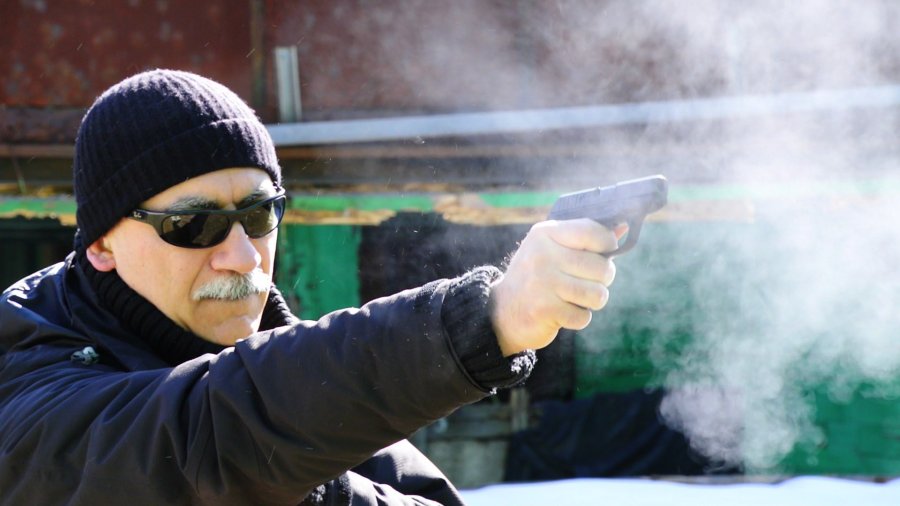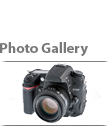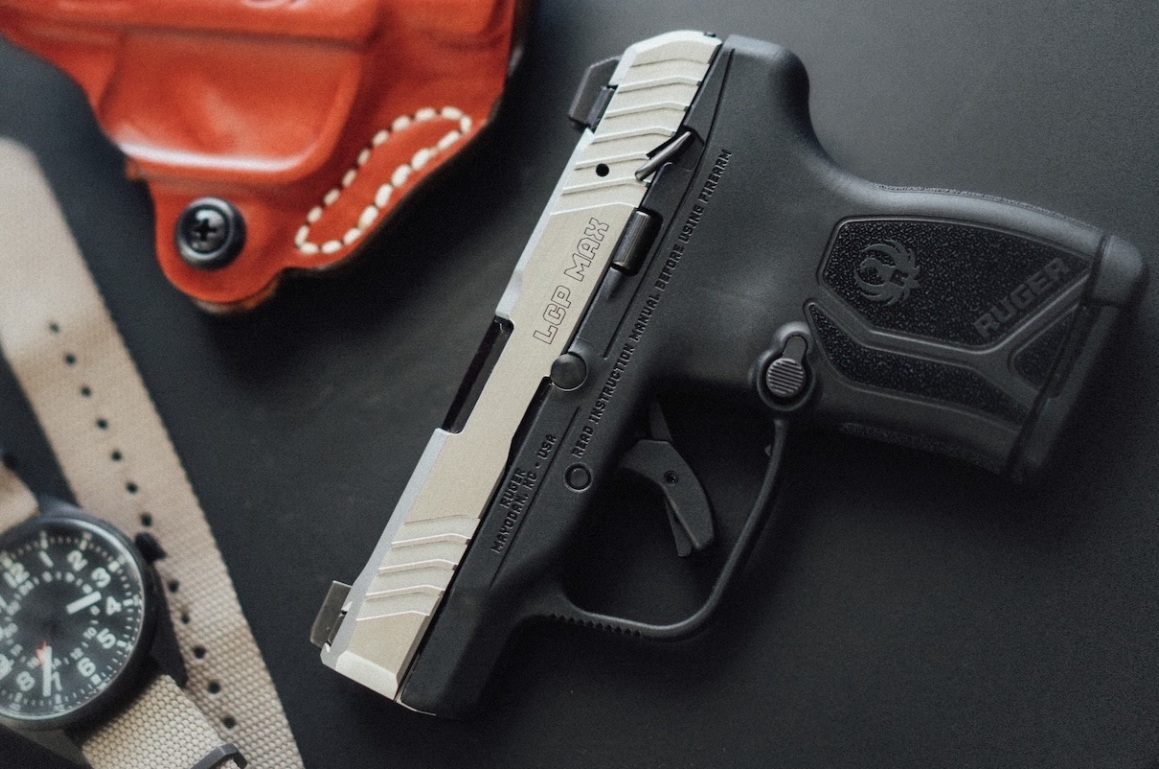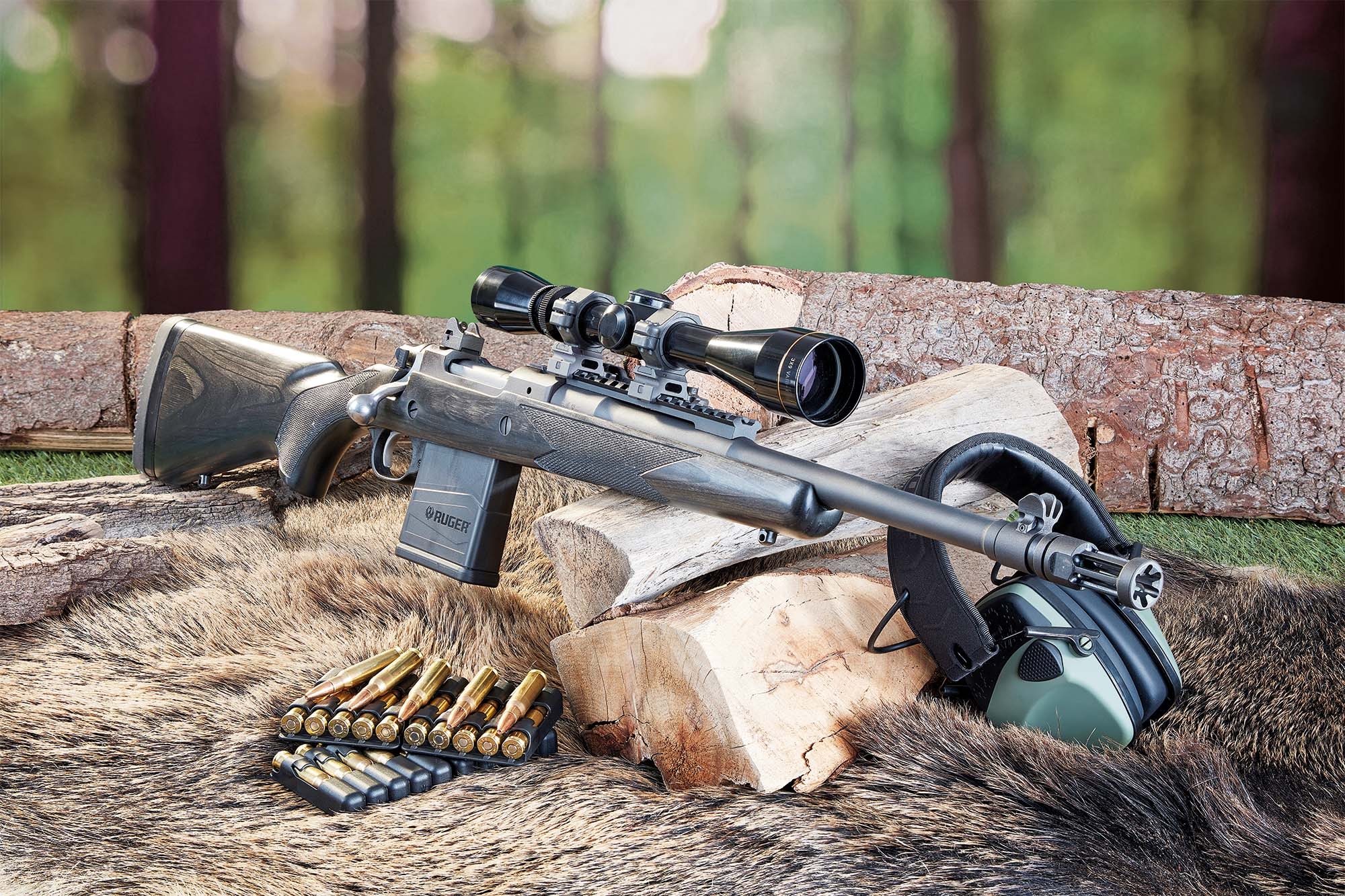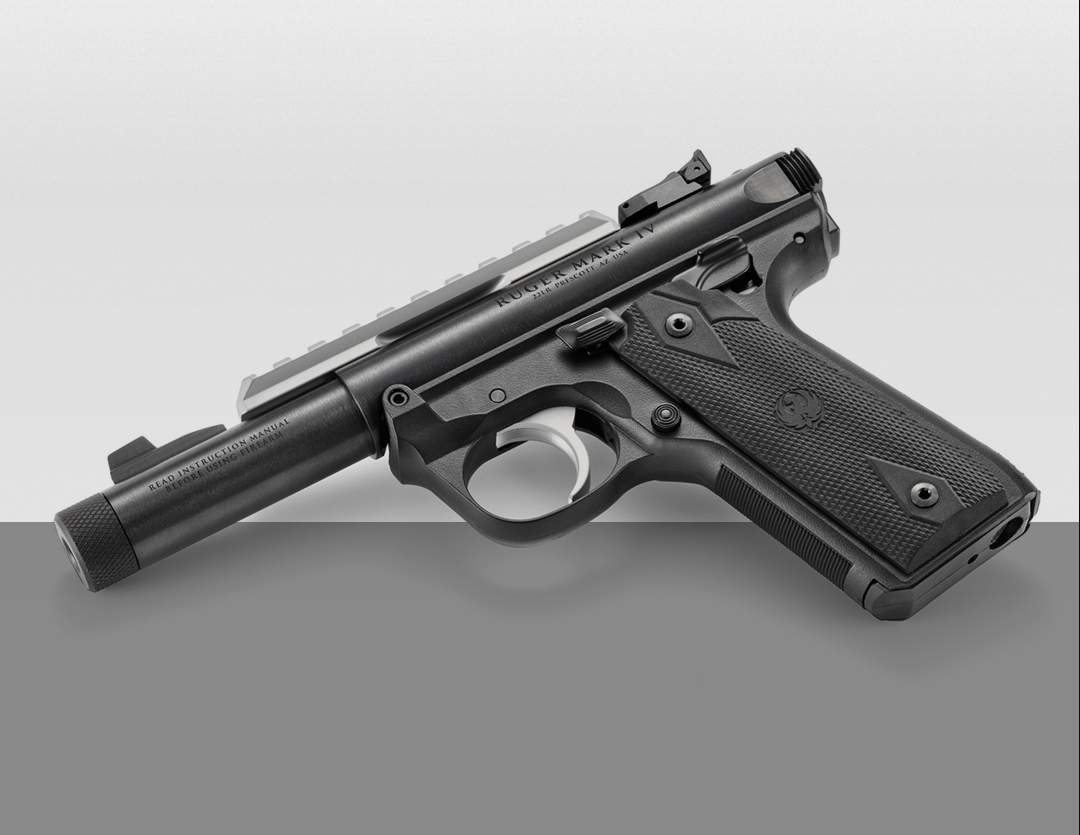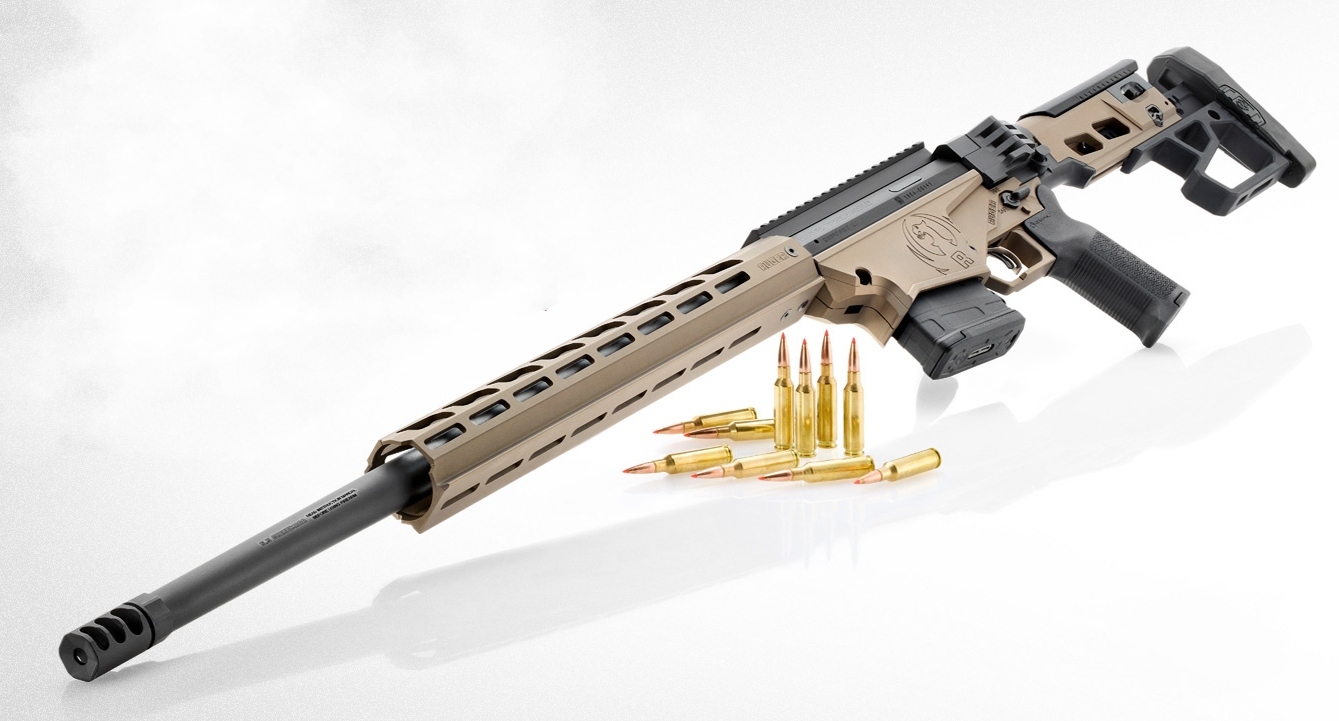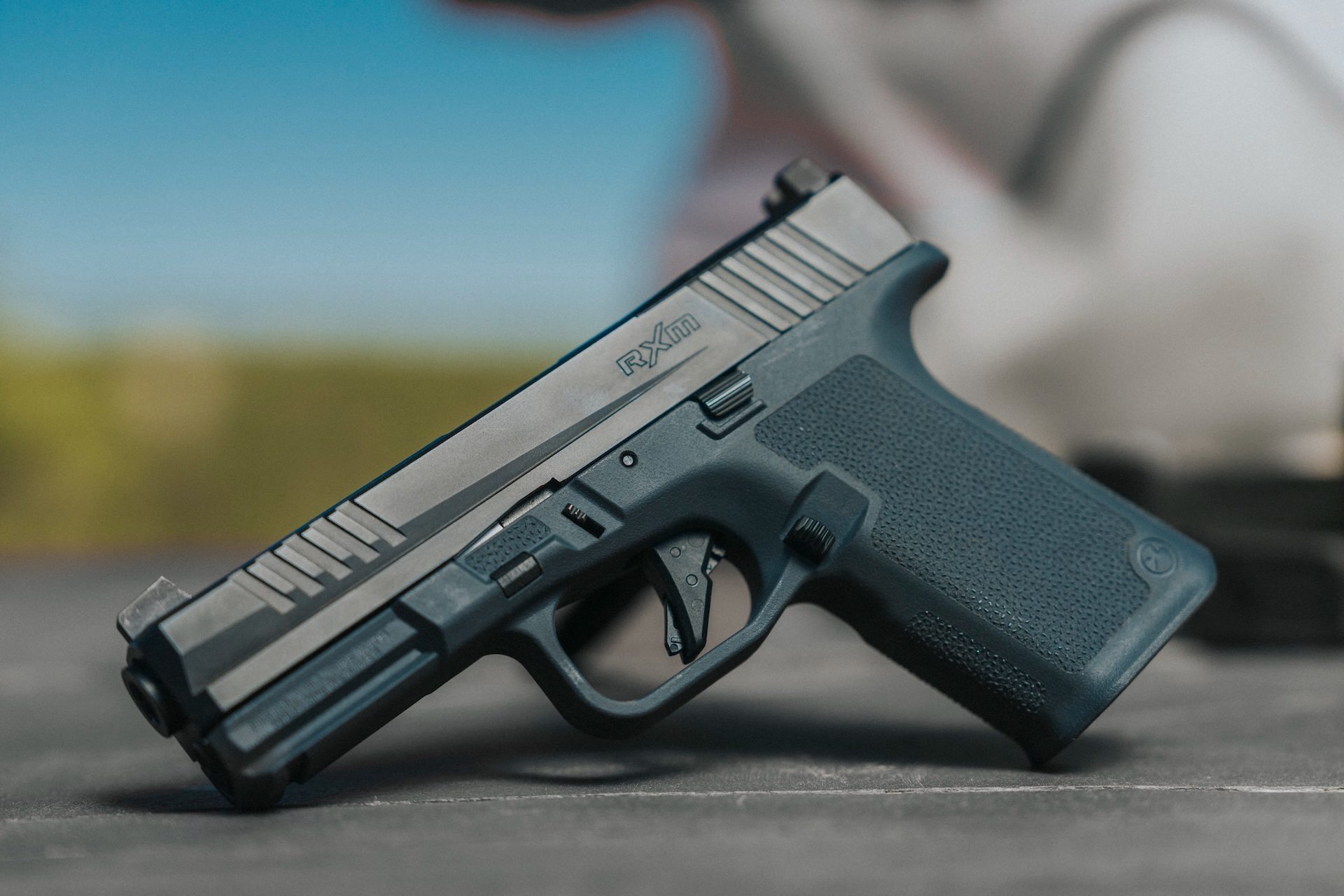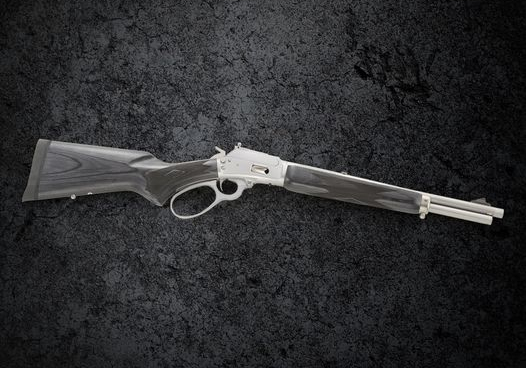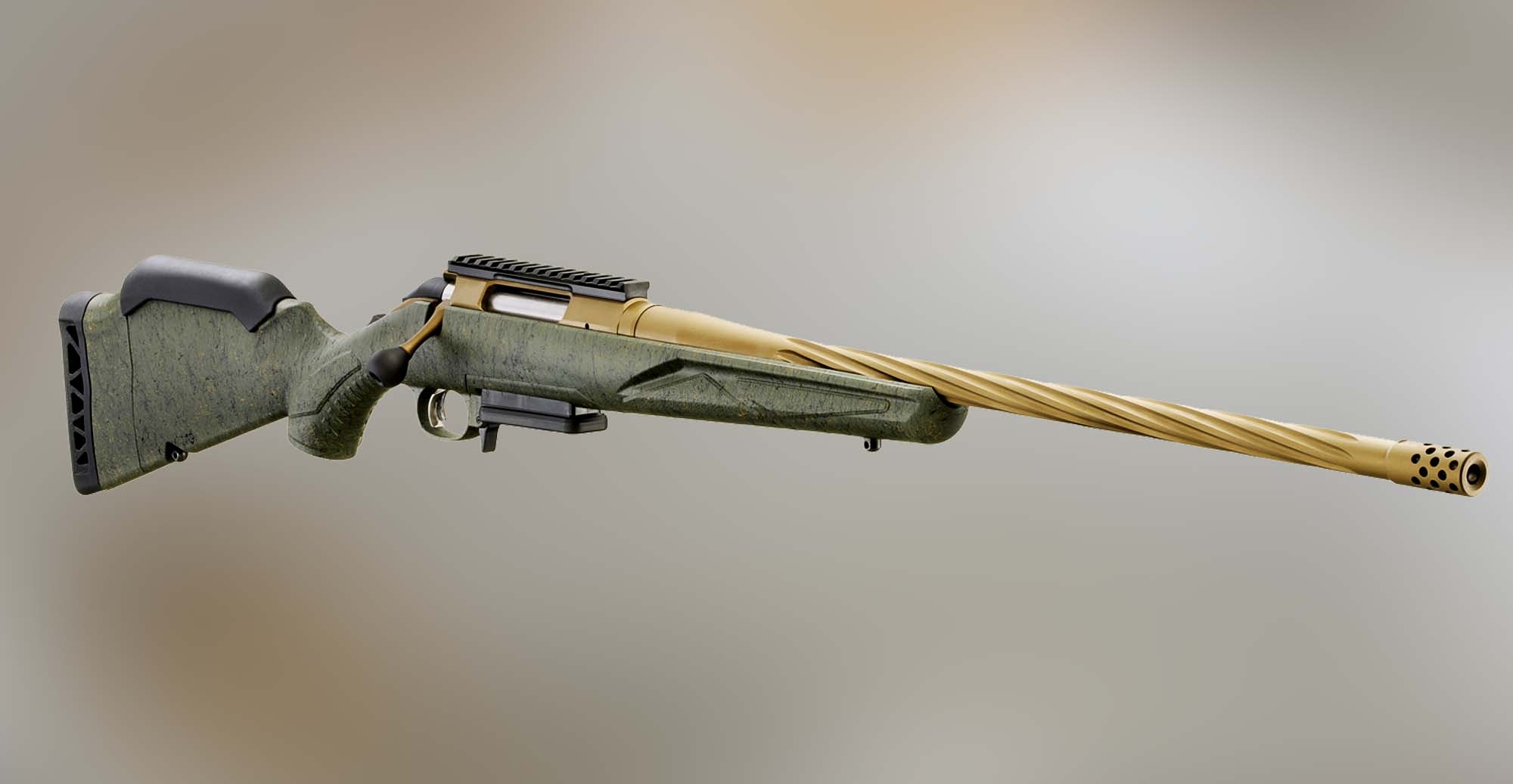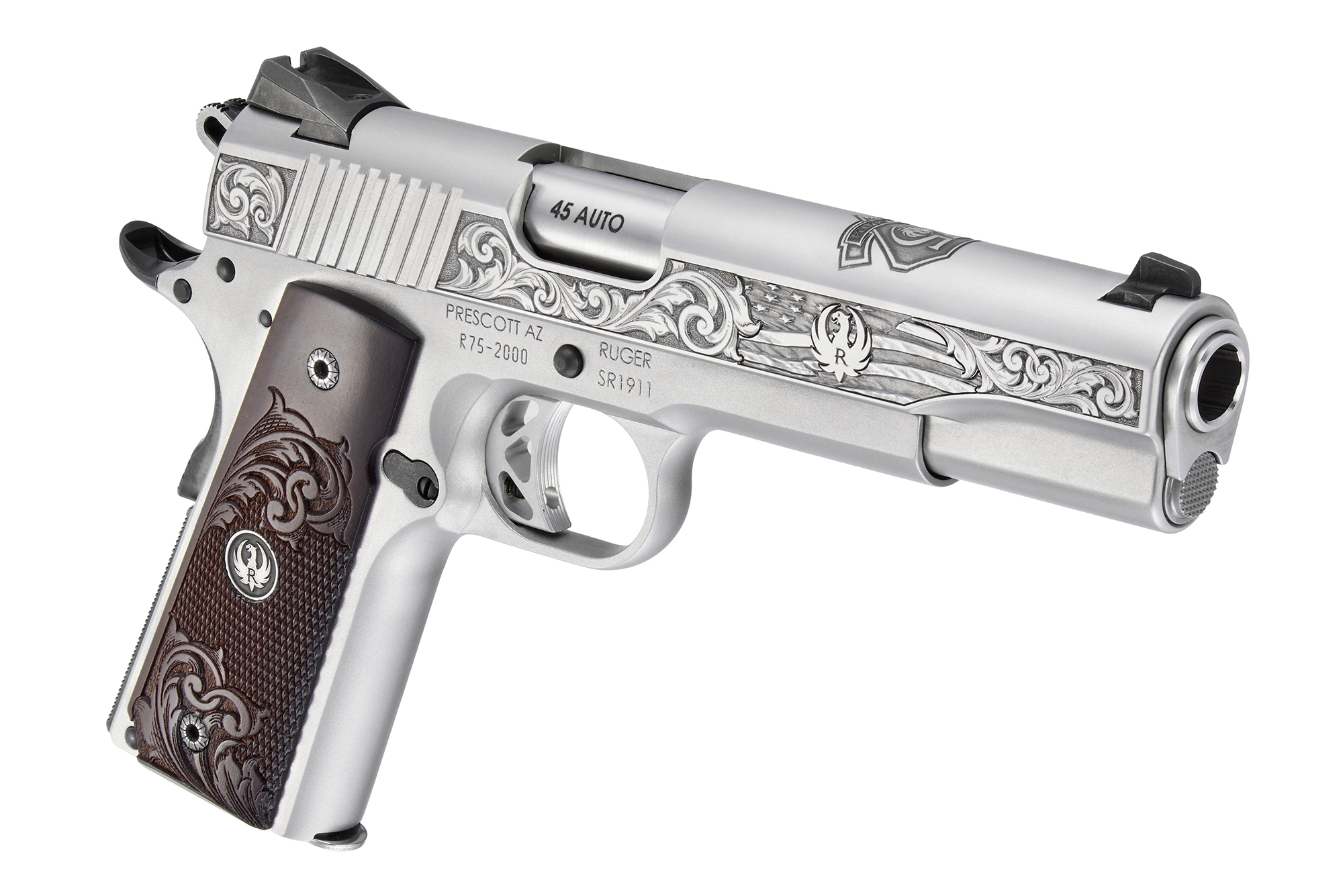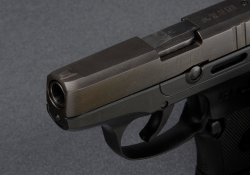
Why buy a sub compact handgun when the market offers larger models that are easier to handle and pack more firepower? Pocket-sized guns are needed when it is really necessary, for many reasons, to conceal the fact that we are armed.
Warm climates requiring reduced clothing, situations requiring thin, and sometimes tight, clothing ‒ especially for the fairer sex ‒ force the use of a smaller handguns that can be easily concealed. In any case, it is never a good idea to make it obvious that we’re packing heat.
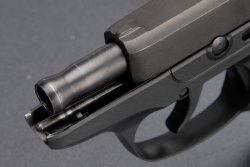
Another reason is theorized by a tactical dogma: one is none, two is one. Let's not go into the substance of how wise we must be, assuming that we could be attacked, but no one can doubt that our primary weapon might fail and the use of a back up weapon may be vital. One last adage that needs no explanation: better a small “lady’s gun” in our pocket than an uncomfortable full size .45 ACP left in the drawer.
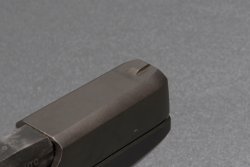
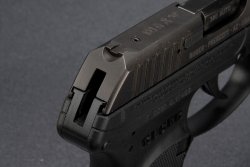
The lightness, small size, caliber used and ease of use of the Ruger LCP simply do not allow any excuse for not carrying a back up gun. The affordability of the LCP must also be taken into account, price in Europe is less than 400 euros. The handgun comes in a very plain cardboard box.
In the box we find a manual, one magazine, a spare floorplate for the magazine without the finger rest, and a soft Nylon case with zipper, convenient for transportation ‒ be careful to abide to your local laws!
J. M. Browning designed the .380 ACP caliber used in the LCP in 1908.
It is also known as 9mm Short, and a dozen other names. Over a hundred years from when it was first manufactured, this caliber is still current.
Its average kinetic energy of 22 Kgm at the muzzle, is more than adequate to use this cartridge for personal defense and home protection. The .380 ACP, compared with more powerful calibers such as the .45 ACP, .40 S&W or 9mm Para, reduces over-penetration problems without, however, never being too weak for the purpose.
This round appears ideal in densely populated urban areas where there is a higher risk of wounding innocent bystanders as a result of overpenetration of the intended target.
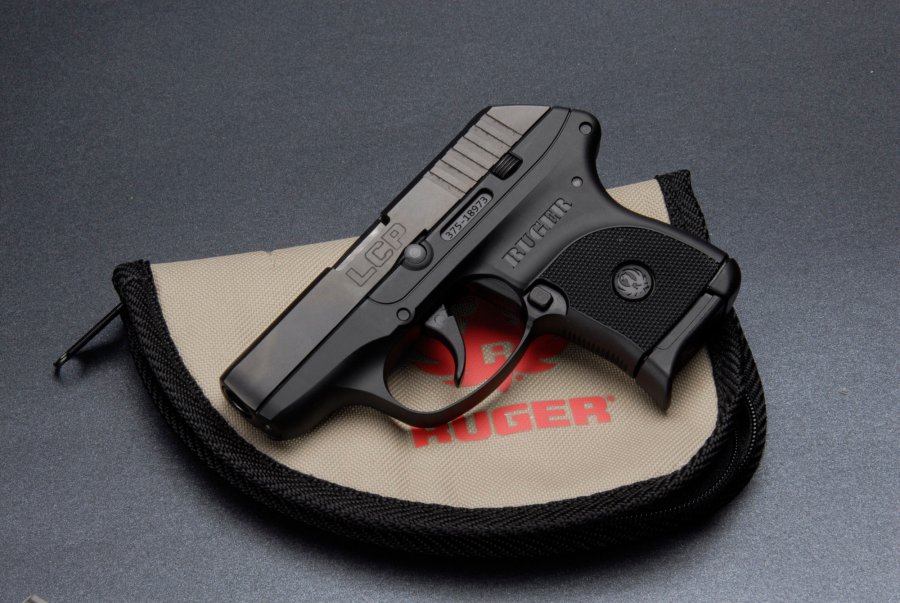
The latest generation of .380 ACP chambered guns are moving away from the delayed blowback system. The “blow back” system, which seems the simplest semiautomatic operating system at first sight, requires careful design because it is based on a precise study of the mass of the slide, the resistance of various springs and part to part friction, which must be done to avoid accidents due to the initial chamber pressure peaks at the cartridge’s ignition.
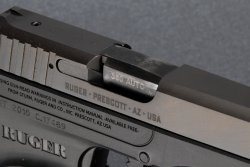
Unfortunately, users of delayed blow back based handguns absolutely do not perceive the elegance and beauty of the finer, and highly abstract, mathematical calculations of the system, but only the very physical resistance of the main spring, which often translates into difficult handling that is all the more increased by the small size of the guns that use this type of system.
The small .380 ACP caliber Ruger LCP intelligently features a fully locked, tilting barrel, modified Browning type, short recoil operated system, where the constraint between slide and barrel is implemented by the prismatic rear portion of the barrel that fits, when the gun is locked, in the ejection window. This improves wear resistance, simplifies construction and lowers cost.
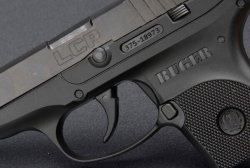
Thanks to the short recoil system, which allows the use of lighter springs and provides, compared to the inertial mass blowback system, an improvement in handling the handgun. The Ruger LCP has a steel slide while the frame, built from fiberglass reinforced nylon, helps to further lower overall weight of this small hand gun that only weighs approximately 270 grams. There is an aluminum chassis in which the trigger parts are assembled. There are no sharp edges that could injure the operator's hand or snag the weapon on clothing during handling or extraction.
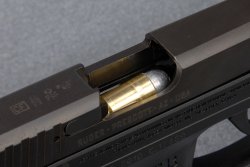
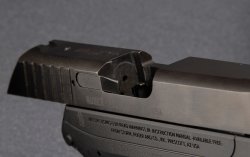
The flat finish of the slide and the black nylon grip are not very appealing but are functional. A gun of this size, designed for personal defense, does not need royal bluing or fine engravings. It only needs to shoot in case of need. As for ergonomics, the size of the weapon certainly does not help but it is the price to pay in order to carry a concealed weapon in any occasion.
The maximum thickness is slightly over 2 cm. The length reaches 13 cm, and height that is slightly over 9 cm, requires being very careful when firing because the operator's hand could easily fall in front of the muzzle. Two-hand shooting is NOT recommended. The small finger will often slip out of the handle, regardless of the size of our hand.
Since the hammer disappears within the slide, the only controls are the easily accessible trigger and the slightly sunken slide stop lever that only works if operated by the user, but is a pleasure to see since it is usually not implemented on weapons of this size. The checkering on the plastic frame ensures a decent grip.
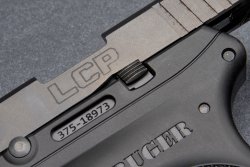
The Ruger LCP is a semiautomatic handgun with a concealed hammer barrel. The trigger action is defined by Ruger as “single strike double action”. Defining a trigger action as single strike double action seems to be a contradiction. In fact, in order to operate, the trigger system of the LCP requires pulling back the slide – manually at first to chamber a round or during the firing cycle – otherwise, once the hammer falls, pulling again on the trigger will not make the hammer fall again. When the first round is chambered in the barrel, pulling back the slide will cause partial cocking of the hammer that will click into half cock state. The transfer lever will be reactivated. When the trigger lever is pulled, the hammer will rise completely up to release and will fall on the firing pin head. After the round is shot, the slide will return to battery and partially cock the hammer again.
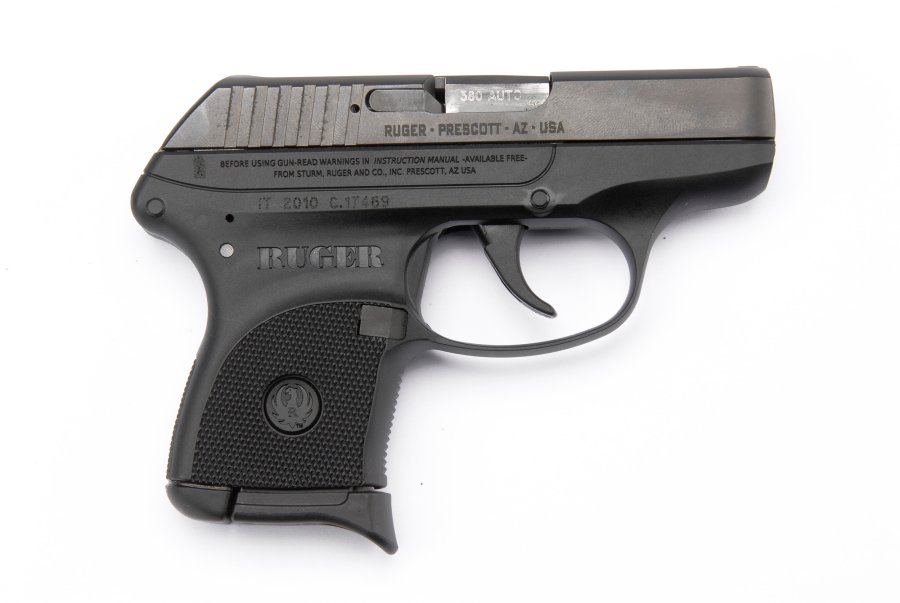
Trigger travel is about 2 cm, with a weight of about 3.5 kg. Although the handgun tested was not properly broken in and had shot only a few rounds, the trigger action proved to be surprisingly smooth and uniform. During trigger reset, the trigger spring is not particularly powerful, and you must be careful to allow the trigger to return once squeezed, so that the sear can be reengaged.
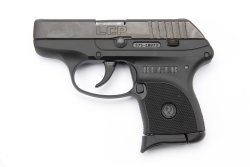
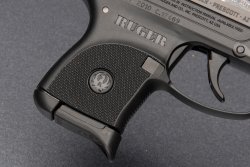
The shooting cycle of the weapon starts with filling the magazine and therefore inserting it in the magazine well. Then the first round has to be chambered by pulling the slide fully backwards and allowing it to slam forward under the thrust of the main springs, stripping a round from the magazineand half cocking the hammer as previously described.
When firing, barrel and slide move back together. After a few millimeters, the wedge shaped portion of the lower rear end of barrel, engaging the cross bar of the slide catch lever, forces the same to tilt downwards, breaking fre of the slide and stop, while the slide can continue its backward travel alone, half cocking the hammer. Once the kinetic energy is depleted, the two main springs, by stretching out, returns the slide into battery, fully locking the breech again. In the forward path the slide strips, thanks to the feeding rib, another round from the magazine pushing it into the chamber and allowing the firing of the next shot. The cycle will continue until exhaustion of the rounds in the magazine.
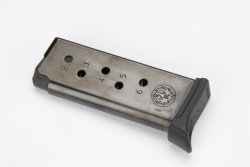
Once the last round is shot, the slide will return to battery on an empty chamber because the slide stop is only user operated on this model, as already mentioned. The slide must be retracted a few millimeters for field stripping, to be done only after properly checking if the handgun is unloaded and clear. With a suitable tool, we pry up the head of the disassembly pin, which is held in place by a small wire spring. The disassembly pin can be pulled out. Once the pin is removed, the slide can be separated from the frame by pushing it towards the muzzle end. Afterwards, the spring guide rod with relative double spring can be removed and the barrel can be lifted from the slide.
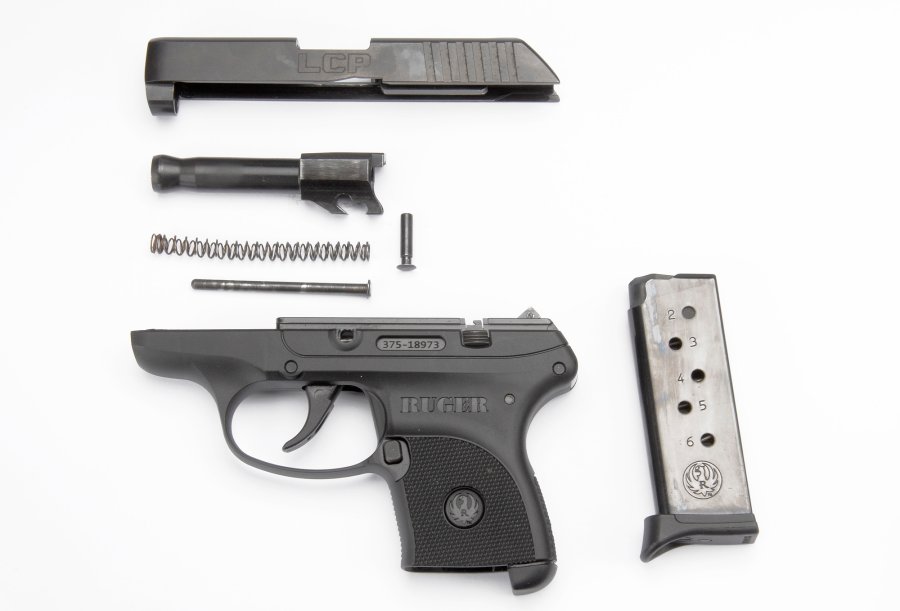
This gun does not feature any manual or automatic safeties. The peculiar trigger action does, however, allow carrying the LCP fully loaded with a chambered round, provided that the user follows all safety standards that require placing the finger on the trigger only when you want to shoot.
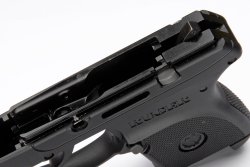
There is a small notch on the side of the barrel that lets the user see whether a round is chambered. The Ruger LCP comes with a single stamped sheet steel magazine that can hold 6 rounds.
The magazine features control holes and a replacement floorplate without finger support. The fixed sights, machined directly on the slide, can barely be seen but this does not hinder the value of this weapon, since it was never designed to be fired at distances that go beyond those statistically occurring in personal defense firefights: from body contact to about seven meters .
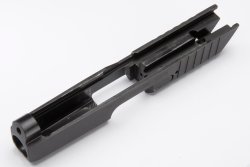
This small Ruger is intended for personal defense, acting as a secondary firearm. However, nothing prevents, given the caliber used and the 7 available rounds (counting the one chambered in the barrel), to use the LCP as a main defensive handgun, especially when the need for concealment is paramount. A version with an incorporated laser collimator is available for those who appreciate technology. We were able to test the weapon with different loadings. Regardless of its accuracy, but that can be secondary in a weapon like this one, we were favorably impressed by the smooth trigger action, the absence of jams and misfires and the very manageable recoil and muzzle flip, despite the reduced weight and scant grip of the weapon, which is not really suited to the hand of an adult: Passed with full marks.


